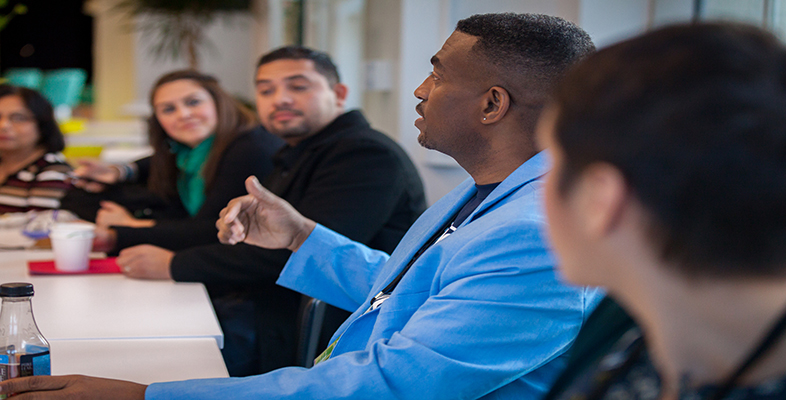3.5 Case studies
Having looked at translation competence and at the CEFR level descriptors, let’s look at two case studies of learners who are thinking of studying for an MA in translation.
Read each case study and, thinking back at the CEFR descriptors and the concept of translation competence, try to assess the potential language gaps these students might have, and what they should focus on in terms of their language development in preparation for the quiz below.
Case study 1: Stuart
Stuart is a native speaker of English. He studied Spanish and English linguistics for his language studies degree in the UK four years ago. Although he reached a level C1 in Spanish, he has not used Spanish much since then, and feels he has forgotten a lot. He is now thinking of doing an MA in Translation, and feels anxious about his level of Spanish, especially his speaking and listening. He would like to specialise in technical translation.
| Mother tongue(s) | English | ||||
| Other language(s) | UNDERSTANDING | SPEAKING | WRITING | ||
| Listening | Reading | Spoken interaction | Spoken production | ||
| Spanish | C1 | C1 | B2 | B2 | C1 |
Case study 2: Silvia
Silvia is originally from Italy, although she has lived in Scotland for over 30 years. She still speaks Italian with her family and friends back home, and often spends her holiday in Italy, but doesn’t do much else to keep up her Italian. She has occasionally helped in her husband’s company, translating emails and invoices, and interpreting when Italian clients have visited. She never studied English formally, and although she speaks it fluently, she is not very confident when writing. She has not thought about what she would like to specialise in.
| Mother tongue(s) | Italian | ||||
| Other language(s) | UNDERSTANDING | SPEAKING | WRITING | ||
| Listening | Reading | Spoken interaction | Spoken production | ||
| English | C1 | B2 | C1 | C1 | B2 |
Activity 4
a.
Stuart
b.
Silvia
The correct answer is a.
a.
Stuart
b.
Silvia
The correct answer is b.
a.
Stuart
b.
Silvia
The correct answer is b.
a.
Stuart
b.
Silvia
The correct answer is a.
a.
Stuart
b.
Silvia
The correct answer is b.
a.
Stuart
b.
Silvia
The correct answer is b.
a.
Stuart
b.
Silvia
The correct answer is a.
a.
Stuart
b.
Silvia
The correct answer is a.
Now look at your language passport, where you did an audit of your language skills, and think about what you might need to work on if you want to become a translator.
Write a short profile about yourself like the two in the case studies you’ve just looked at, and then write five pieces of advice you would give yourself. This is the basis of an initial language development plan if you want to work towards becoming a translator.


